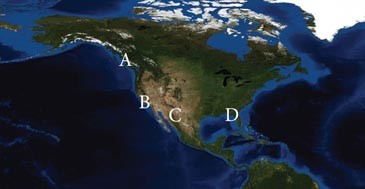Explain how the amount of solar energy received at the top of Earth's atmosphere varies on both the short term (decade and century) and the long term (thousands to hundreds of thousands of years)
What will be an ideal response?
Satellite measurements show that solar radiation varies with the 11-year sunspot cycle. In addition, there are longer trends of increasing or decreasing radiation, on the scale of many decades to centuries, which are interpreted from theoretical calculations and consistent with the limited period of satellite data collection. On the longer time frames, the Milankovitch cycles that describe variations in the tilt and wobble of Earth's rotation axis and variations in the shape of Earth's orbit around the Sun, also cause changes in the amount of solar radiation reaching Earth.
You might also like to view...
the map of the world average annual temperature range shows _______ to have the greatest range.
a - central europe b - eastern siberia c - northern africa d - central australia e - southern south america
Metamorphism taking place adjacent to a body of magma (a pluton) or beneath a lava flow from
heat and chemically active fluids:a. orogeny d. nonconformity b. contact metamorphism e. regional metamorphism c. burial metamorphism
Which coastal marine ecosystem consists of at least 60 species of plants that grow underwater in shallow marine and estuarine areas along most continental coastlines?
A. salt marshes B. sea grass beds C. intertidal zones D. mangrove forests E. coral reefs
This region receives the most July precipitation due to the clockwise circulation of high pressure supplying warm, moist air:
A. A B. B C. C D. D